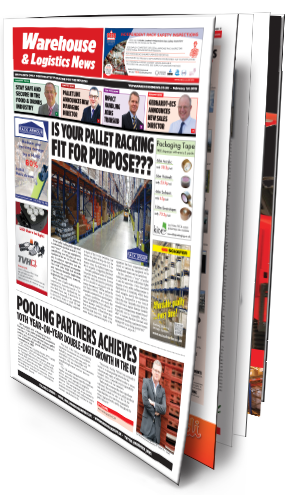 Welcome to the February 1st Warehouse & Logistics News. One month in, and we’ve beaten the January blues. Britain’s business people are presumably also feeling cheered up by the IMF’s MD Christine Lagarde saying recently that our economic performance is providing “eloquent and convincing” leadership for the rest of the EU, with economic growth more inclusive, better shared, more sustainable and more balanced than our European neighbours. Now it’s a matter of taking advantage of the situation.
Welcome to the February 1st Warehouse & Logistics News. One month in, and we’ve beaten the January blues. Britain’s business people are presumably also feeling cheered up by the IMF’s MD Christine Lagarde saying recently that our economic performance is providing “eloquent and convincing” leadership for the rest of the EU, with economic growth more inclusive, better shared, more sustainable and more balanced than our European neighbours. Now it’s a matter of taking advantage of the situation.
You can help your warehouse and logistics operations get ready for the growth to come with our features in this issue. ‘Fork Trucks’ includes counterbalance trucks, side loaders, VNA, reach trucks and other specialist machines. ‘The Loading Bay’ covers doors, dock levelers and dock lifts. And ‘Warehouse Flooring’ takes in floor preparation, maintenance, mezzanines, area markings and cleaning machines.
If you’re a storage equipment end user and you’re gearing up for growth, you need to ask yourself: is my pallet racking fit for purpose? You’ll find plenty of guidance in our front cover story from the Rack Group, and the detailed article in this issue. Pallet racking is the backbone to any warehouse operation and can present high-risk hazards and expensive financial implications if incorrectly specified, misused, neglected or abused. According to the Rack Group, pallet racking users may be surprised to learn that much of their equipment may not be fit for purpose, especially if serviced with a fork lift truck or other mechanical handling equipment as part of day to day operations. Even if the racking is claimed by the supplier to carry the specified load, it doesn’t make it fit for purpose if the slightest impact renders it incapable of supporting that load!
The Rack Group’s article refers to recently published codes of practice for pallet racking protection devices, stating that in aisles protection devices should be designed with energy absorptions of 200Nm and 400Nm on end frames, representing low speed impacts. The guidelines also state that where uprights are subjected to impact damage producing an overall bend in the member of 3mm front face and 5mm side face over a one metre length, the equipment’s structural integrity is compromised sufficiently to warrant isolating it until repairs are carried out. With pallet racking’s structural integrity depending on remaining within these margins, the equipment should be designed to make those areas most vulnerable to fork lift impact damage durable enough to withstand these impact forces. With the pressure on to maximize output and productivity, it’s only reasonable to expect that fork lift truck and mechanical handling equipment impact will occur during normal use, and not necessarily at low speed. So you know what to expect…




Comments are closed.